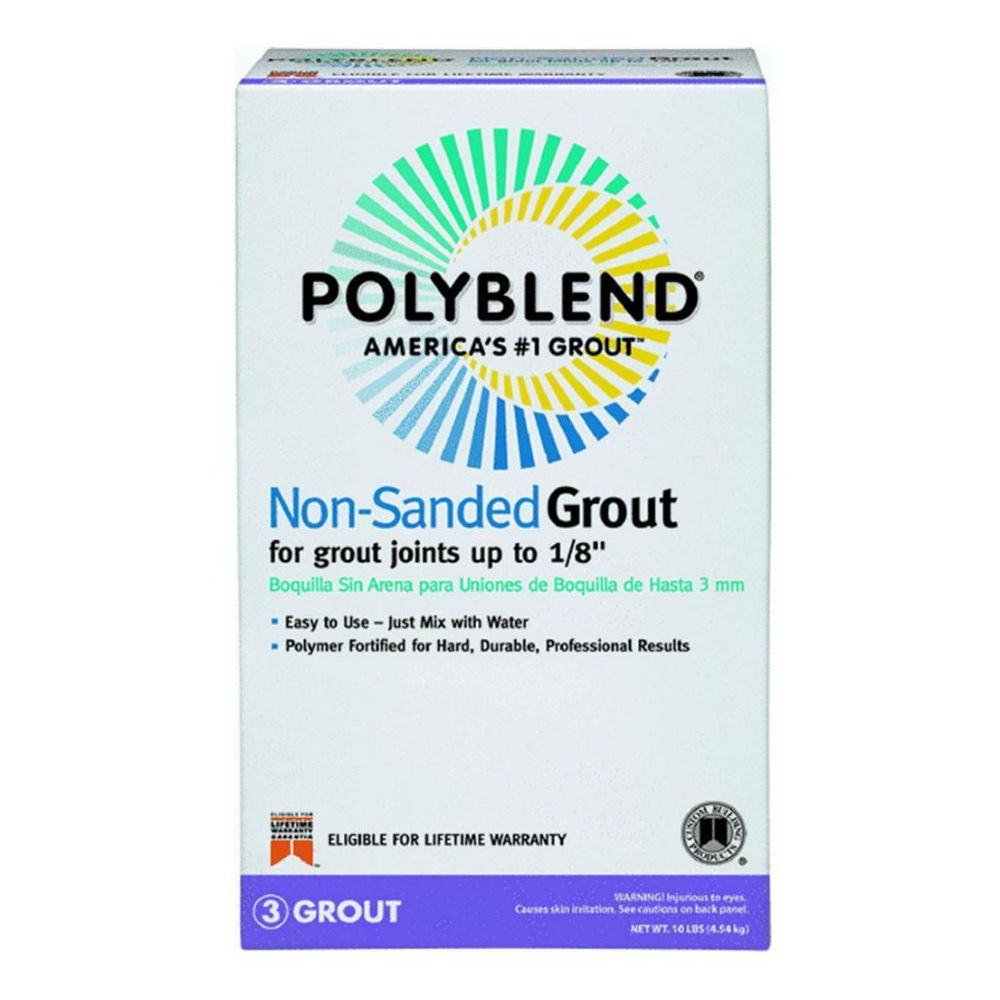Fri, Nov 30, 2018
Article may contain affiliate links. As an Amazon Associate I earn from qualifying purchases.
So you are at your favorite home improvement store looking at the grout options. Then all of a sudden you notice there are two different types to choose from: sanded or unsanded grout.
Which one should you choose?
As a general rule you should use sanded grout when your tiles are spaced at least 1⁄8” apart. Otherwise you should use unsanded grout to fill narrower tile gaps.
But before you head to the checkout line, you should consider where you plan to apply the grout.
For instance, unsanded grout works great on vertical surfaces like kitchen backsplashes and bathroom walls.
On the other hand, sanded grout holds up well to foot traffic and should be used on kitchen and bathroom floors.
Still confused about using sanded vs unsanded grout? Keep reading below to learn more.
|  |  |
| 1/8" - 1/2" gaps | 1/16" - 1/8" gaps |
| Great for floors | Best for Walls |
| Many Colors | More Expensive |
| Check Price | Check Price |
When to Use Sanded Grout

Sanded grout is the most popular option you will find at your favorite hardware store. It comes in the widest range of colors and will not shrink or crack when properly applied.
You should use sanded grout when your grout lines are 1⁄8” to 1⁄2” thick. Sand gives the grout tensile strength and will help prevent shrinkage overtime.
However, the added sand also makes it difficult to apply into small areas that are less than ⅛” wide. If you try to use sanded grout in small spaces, you may end up with bubbles or pockets in your grout lines.
Most tile installers recommend using sanded grout for floor tiles because it will withstand foot traffic better than unsanded grout.
One of the final reasons sanded grout is one of the most common choices is because it is about half the price of unsanded grout.
Where to use sanded grout:
Grout lines 1⁄8” to 3⁄8” thick
Kitchen Floor
Bathroom Floor
Shower Pan
When to Use Unsanded Grout

Unsanded grout is used less frequently than sanded grout, however it has a very specific purpose.
In contrast to sanded grout, the unsanded variety is able to fit between tiles that are only 1⁄16” apart. It is not recommended to use unsanded grout on tiles that have spacing larger than 1⁄16” because it may slump or crack over time.
You will find non-sanded grout used on tiled bathroom and shower walls as well as kitchen backsplashes.
Unsanded grout is considered to be stickier than sanded grout, making it a great option for vertical surfaces.
Although you could also use it for floor tiles, this is not a common application. Without the addition of sand, this grout is much less durable and may not withstand heavy foot traffic.
Where to use unsanded grout:
Grout lines 1⁄16” to 1⁄8” thick
Kitchen Backsplash
Shower Wall
Bathroom Wall
Conclusion
When it comes down to it, choosing between sanded and unsanded grout is pretty simple. All you need to do is think about where you plan to use it.
If you are installing wall tiles that are set within 1⁄16” of each other, than you should use unsanded grout. On the other hand, if you are installing floor tiles with wider spacing, you should use sanded grout.
However, this information might not be helpful if you are unsure how wide you should space your tiles! Well, the fact is that there are no industry standards as to how far apart your tiles should be spaced.
One rule of thumb to keep in mind is that the closer the grout joints, the more precise you need to be.
If this is your first tile installation project, you may want to start by installing your floor tiles. These usually have wider spacing and will make your mistakes less noticeable.
When installing small or decorative wall tiles that are set close together, any misalignment will make the tiles look like they were poorly installed. Be sure to take your time and use a level throughout the project.
Good luck with your tile installation. Let us know how it goes!
READ NEXT
